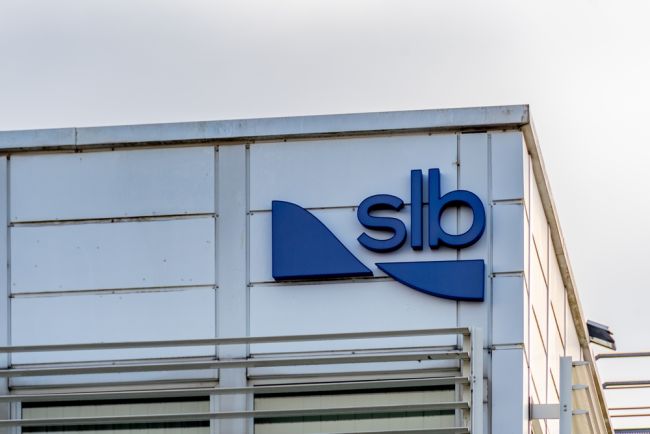Oil price headwinds caused by increased OPEC+ production, tariffs and more have placed downward pressure on oilfield service companies in the second quarter.
But despite an uncertain macro environment, SLB anticipates continued gains in digital and AI adoption and a focus on production and recovery to help drive second-half 2025 revenue growth bolstered by the integration of ChampionX.
Speaking to analysts July 18 during the company’s second-quarter 2025 earnings call, SLB CEO Olivier Le Peuch spoke of headwinds caused by OPEC+ supplies flowing into an already well-supplied market, downside risk of short-cycle spending in North America and tariffs.
“All in, while sustained releases could exert pressure on commodity prices in the near-term, the removal of the overhang of OPEC+ voluntary cuts will allow for market stabilization over time,” Le Peuch said. “While it is difficult to predict the outcome from the combination of further supply releases, persistent geopolitical risks and lingering tariff negotiations, it is fair to assume sustained resilience in the market outlook, absent of a dramatic shift in commodity prices.”
WTI spot prices dropped from an average of $75.74 in January to $62.17 in May before climbing to $68.17 in June, according to data from the U.S. Energy Information Administration. Crude was trading at about $67.70/bbl around midday July 18. The decline has given rise to fears of a pullback in spending by E&Ps, which in turn impacts the need for oilfield services from companies like SLB.
“It’s clear now that the total market is in slight decline in 2025 compared to ’24,” Le Peuch said, in agreement with an analyst’s insight that global upstream spending is on track to decline this year.
While SLB sees resiliency in the Middle East and Asia in the short term, driven by lower break-evens and continued focus on energy security as well as development of gas assets, Le Peuch said land activities across North America and Latin America have the greatest downside risks due to their short-cycle spend.
The company anticipates growth in its digital business in the second half of the year and plans to report results from the digital business as a separate segment starting in the third quarter. SLB said it has more than 7,800 users across its Delfi digital platform, representing double-digit year-on-year growth.
“Globally, we expect operators to remain focused on critical in-flight development projects, and an acceleration of efficiency gains, with a heavier focus on production and recovery, and continued investments in digital and AI,” Le Peuch said.
Bigger and better
SLB’s $7.76 billion ChampionX acquisition is expected to have a positive impact on second-half revenue growth. The company said it expects revenue of between $18.2 billion and $18.8 billion in the second half. The acquisition expanded SLB’s production and recovery segment, seen as key for operators looking to arrest declines and extend the life of aging assets.
“Our customers and operators are focused on trying to extract more value from production recovery phase of their assets … They’re trying to get the most [from] existing aging asset to make sure that they extend the plateau, they improve the performance, and they improve the recovery to extract more from aging assets,” he said.
Comparing the first half to the second half of the year, including ChampionX on a full six-month basis and excluding Palliser in H1, SLB CFO Stephane Biguet said second-half revenue growth from flat to low single digits is expected, driven by SLB’s legacy portfolio and the ChampionX addition.
He pointed out that ChampionX closed the second quarter with approximately $850 million in revenue and adjusted EBITDA of approximately $190 million, excluding the drilling technology business it disposed of with the SLB transaction closing.
“We expect both the legacy SLB businesses and ChampionX to continue delivering strong performance in the second half of this year,” Biguet said. “This will, however, be partially offset by the impact of tariffs.”
The company indicated a 20-40 basis points impact on its margins due to tariffs imposed by President Donald Trump.
Financial highlights
For second-quarter 2025, SLB posted revenue of about $8.55 billion, down about 6% from $9.12 billion a year earlier.
International revenue fell to about $6.85 billion, down from $7.45 billion. North American revenue inched up to about $1.66 billion, up from about $1.64 billion.
Of SLB’s divisions, production systems revenue fell by less than 1%, holding steady at about $3 billion compared to a year earlier, but climbed 3% sequentially driven by artificial lift and midstream production system sales.
Revenue in all other divisions—digital and integration, reservoir performance and well construction—fell slightly compared to the year-ago quarter. Digital sales grew internationally with higher platform and application sales, but that was outweighed by lower exploration data revenue in North America, SLB said.
“All in all, this quarter was challenging with lots of moving parts, yet we produced solid results,” Le Peuch said. “Considering the uncertainty and market volatility, the entire SLB team has delivered remarkably well.”
SLB was the first of the three U.S. largest oilfield services providers to report quarterly earnings. Halliburton will host its quarterly earnings call July 22, while Baker Hughes is scheduled to have its second-quarter 2025 earnings conference call July 23.
